
Photonic Sensors
metrics 2024
Pioneering Breakthroughs in Materials and Optics
Introduction
Photonic Sensors is a premier open access journal published by Springer, focusing on the rapidly evolving fields of Photonics, Materials Science, and Optics. Since its inception in 2011, this journal has become a vital platform for disseminating cutting-edge research and innovative applications in photonic technologies, addressing a range of topics from optical sensors to advanced materials for photonics. With an impressive impact factor and categorized in the Q2 quartile across both Atomic and Molecular Physics and Electronic, Optical and Magnetic Materials, it ranks among the top publications in its field (47th out of 284 and 38th out of 224, respectively, in Scopus). The journal actively encourages contributions that not only advance theoretical understanding but also pave the way for practical solutions in various industries. Photonic Sensors is essential reading for researchers, professionals, and students keen on exploring the frontiers of photonic research, with open access ensuring wide visibility and engagement within the scientific community.
Metrics 2024
 0.74
0.74 5.00
5.00 3.30
3.30 45
45Metrics History
Rank 2024
Scopus
IF (Web Of Science)
JCI (Web Of Science)
Quartile History
Similar Journals
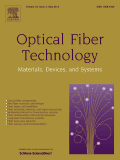
OPTICAL FIBER TECHNOLOGY
Transforming Research into Real-World ApplicationsOPTICAL FIBER TECHNOLOGY is a premier journal in the fields of atomic and molecular physics, optics, control and systems engineering, as well as electrical and electronic engineering, published by ELSEVIER SCIENCE INC. With an ISSN of 1068-5200 and E-ISSN 1095-9912, it offers a platform for disseminating cutting-edge research and developments in optical fiber technology and its applications. The journal has achieved a notable impact, ranking in the second quartile for multiple categories in 2023, including control and systems engineering and electronic, optical, and magnetic materials. By providing a robust avenue for peer-reviewed articles, OPTICAL FIBER TECHNOLOGY caters to a diverse audience of researchers, professionals, and students dedicated to advancing knowledge and innovation in optics and related fields. This respected journal is particularly suited for those seeking to stay updated on the latest technological advancements and research trends, ensuring its relevance in both academic and industrial contexts.
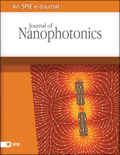
Journal of Nanophotonics
Where Nanotechnology Meets Photonic InnovationThe Journal of Nanophotonics, published by SPIE-SOC Photo-Optical Instrumentation Engineers, is an esteemed platform dedicated to advancing the field of nanotechnology through pioneering research in photonics. Since its inception in 2007, this journal has become instrumental in disseminating innovative findings and fostering collaborative discussions, especially in the domains of Condensed Matter Physics, Electronic, Optical and Magnetic Materials, and Nanoscience and Nanotechnology. Currently ranked within the Q3 category across these fields, it serves as a vital resource for academics, industry professionals, and students keen on exploring the multifaceted applications and implications of nanophotonic technologies. With its convergence set to continue until 2024, the journal offers a non-open-access model, ensuring rigorous peer-review standards and high-quality publications that contribute to the global body of knowledge.
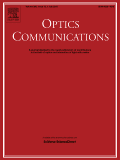
OPTICS COMMUNICATIONS
Illuminating the Future of Optical ResearchOptics Communications, published by Elsevier, is a prestigious international journal that focuses on the dynamically evolving fields of optics and photonics. With its ISSN 0030-4018 and E-ISSN 1873-0310, this journal has made significant contributions to the fields of Atomic and Molecular Physics, Electrical and Electronic Engineering, Electronic, Optical and Magnetic Materials, and Physical and Theoretical Chemistry, consistently ranking in the Q2 quartile across these categories for 2023. The journal, based in the Netherlands, is recognized for its rigorous peer-review process and aims to publish high-quality research articles that advance knowledge and applications in optical communication technologies. Although it operates under a subscription model, the insightful research published here plays an essential role in informing the work of researchers, professionals, and students alike. With a history dating back to 1969 and spanning well into 2025, Optics Communications remains a crucial resource for cutting-edge developments in optics, catering to a global audience dedicated to innovation in this pivotal science.
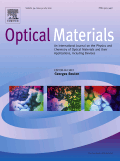
OPTICAL MATERIALS
Illuminating the Future of Optical MaterialsOPTICAL MATERIALS is a peer-reviewed journal published by Elsevier, focusing on the intricate field of optical materials within various scientific domains including atomic and molecular physics, electronic engineering, and chemistry. With an impact factor indicative of its relevance, it ranks in the Q2 category across multiple areas such as Electrical and Electronic Engineering, and Inorganic Chemistry, highlighting its critical position in advancing research and innovation. Established in 1992 and continuing its contribution until 2024, this journal serves as a vital resource for researchers and professionals aiming to disseminate significant findings in material sciences, particularly those related to optical properties and applications. While it does not offer open access, the journal remains essential for academia and industry alike, ensuring the continued exchange of valuable knowledge in this rapidly evolving field.

Photonics Letters of Poland
Fostering Collaboration in Photonics ResearchPhotonics Letters of Poland is a prominent journal dedicated to the field of photonics, published by the Photonics Society of Poland. With an ISSN of 2080-2242, the journal aims to foster knowledge and innovation within electronic, optical, and magnetic materials. Although it currently holds a Q4 classification in its category and is ranked in the 21st percentile, it serves as an essential platform for researchers and practitioners to share their findings and advancements. The journal covers a range of topics from foundational research to applied science, highlighting advancements in photonics technologies and their applications. Operating from Warsaw University of Technology, the journal promotes open access to knowledge while ensuring rigorous peer review standards. With its coverage spanning from 2009 to 2024, Photonics Letters of Poland represents a vital contribution to ongoing research within the field, making it indispensable for students, professionals, and academics looking to stay attuned to emerging trends and developments in photonics.

Computer Optics
Advancing the Intersection of Optics and Computer ScienceComputer Optics is a prominent academic journal dedicated to advancing the field of optics and its integration with computer science, published by the IMAGE PROCESSING SYSTEMS INST of the Russian Academy of Sciences. With an ISSN of 0134-2452 and an E-ISSN of 2412-6179, this journal has been a vital resource for researchers and professionals since it became Open Access in 1987, promoting the free dissemination of knowledge. Based in Samara, Russia, Computer Optics covers a broad range of relevant topics, with its scope spanning atomic and molecular physics, optics, computer vision, and electrical engineering. Although characterized within Q4 and Q3 quartiles in various categories in 2023, its rigorous peer-review process ensures the publication of high-quality research contributions. The journal is crucial for those wishing to explore interdisciplinary approaches that merge practical applications of optics with cutting-edge computer technologies, thereby acting as a bridge between these dynamic fields.

Photonics, an esteemed journal published by MDPI, is a leading platform for researchers in the fields of atomic and molecular physics, optics, and instrumentation. Since its inception in 2014, the journal has fostered open access to cutting-edge research, facilitating knowledge dissemination in these dynamic disciplines. With its Q2 ranking in the 2023 Scopus metrics for various categories, including radiology, nuclear medicine, and imaging, Photonics represents a crucial academic resource for professionals and students seeking to advance their understanding and expertise. Located in Basel, Switzerland, the journal plays a pivotal role in bridging theoretical and practical approaches to photonic technologies. Researchers are encouraged to contribute their findings, thereby enriching the journal’s impact and relevance in the global scientific community through collaboration and innovation.
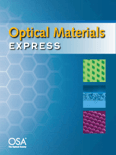
Optical Materials Express
Illuminating innovation in electronic and optical materials.Optical Materials Express is a leading open-access journal dedicated to the rapid dissemination of research in the field of optical materials, published by the esteemed Optica Publishing Group. Since its inception in 2012, the journal has played a pivotal role in advancing knowledge and innovation in Electronic, Optical, and Magnetic Materials, currently maintaining a commendable Q2 classification in the 2023 category rankings. With a Scopus rank of 86 out of 284 in its category, the journal proudly boasts a 69th percentile positioning, underscoring its impact and relevance within the scientific community. The journal publishes high-quality, peer-reviewed articles that explore both fundamental and applied aspects of optical materials, making it an essential resource for researchers, professionals, and students alike. Located in Washington, DC, and accessible to a global audience, Optical Materials Express continues to foster collaboration and innovation among scholars in this vibrant field.

SENSORS AND ACTUATORS B-CHEMICAL
Innovating the Future of Chemical Applications.SENSORS AND ACTUATORS B-CHEMICAL, published by ELSEVIER SCIENCE SA, is a premier scientific journal that occupies a vital niche in the field of materials science and engineering. With an impressive impact factor and ranking in the Q1 category across multiple disciplines, including Condensed Matter Physics, Electrical and Electronic Engineering, and Materials Chemistry, this journal is recognized as a leading source of innovative research and developments in sensor technologies and their chemical applications. The journal disseminates high-quality articles with a focus on the design, fabrication, and application of sensors and actuators, promoting valuable insights that cater to researchers, professionals, and students alike. As a testament to its scholarly significance, SENSORS AND ACTUATORS B-CHEMICAL remains pivotal for those seeking to advance their understanding of electronic, optical, and magnetic materials. The journal is accessible primarily through subscription, ensuring a wide reach to the academic community, and contributing significantly to the ongoing exploration and interdisciplinary collaboration in this dynamic field.

Plasmonics
Unveiling the Mysteries of Nanoscale InteractionsPlasmonics, published by Springer, is a prestigious journal dedicated to advancing the field of plasmonics and its interdisciplinary applications, with a particular focus on biochemistry, biophysics, biotechnology, and nanoscience. Established in 2006, this peer-reviewed journal serves as a vital platform for researchers to disseminate groundbreaking findings and innovative methodologies related to the manipulation and application of surface plasmons for various technologies. Featuring an impressive Q3 ranking in critical scientific categories, including Biochemistry and Nanotechnology, Plasmonics is recognized for its contribution to enhancing the understanding of nanoscale phenomena and their relevance to contemporary research and development. While currently not an open-access publication, Plasmonics continues to play a key role in bridging academic inquiry and practical application, making it indispensable for professionals and students striving to stay at the forefront of this dynamic field.